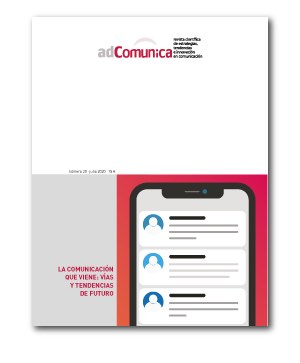Advertising and sales increasing. Inductive study on selling campaigns)
Main Article Content
Abstract
The primacy of cognitivist methodologies, equivocal econometric studies and some fallacies in the commercial valuation of advertising have conceptually diluted sales, giving preference to other outputs and have contributed to neglecting the need to isolate and theorize advertising procedures capable of increasing sales.
To overcome the deficiency, the so-called Grounded Theory, a qualitative-inductive paradigm of recent application in marketing, has been used ad experimentum, with the aim of establishing generalizable patterns from the sites of cases, both to classify and to generate predictive hypotheses, which are of value for advertising practice. Critical incidents have been revealed from a content questionnaire to a semi-random selection from among 1,104 cases of campaigns awarded for their selling efficiency –IPA (1992-2016) and Efi Awards (2015-2017)– examined until reaching saturation productivity and finishing process with 30 cases examined.
The main conclusions are: 1) the advertising-sales elasticity becomes up to 3000% higher than that obtained in econometric meta-studies; 2) a distinction must be made between maintenance and sales increase campaigns; 3) effectiveness should be pre-verified not primarily with simple pretest metrics, but from an efficiency forecasting model that includes at least the following content patterns capable of increasing sales: a) Granular segmentation. b) Brand rejuvenation. c) Serialization of messages. d) Dominate cultural territory. e) Presentation of the brand as a reducer of psychosocial tensions. f) Experiential advertising, promoter or echo of tactile and vicarious experiences. g) Influential message on the consumption mode.
Downloads
Article Details
1. Política propuesta para Revistas que ofrecen Acceso Abierto
Los autores que publican en esta revista están de acuerdo con los siguientes términos:
- Los autores conservan los derechos de autor y garantizan a la revista el derecho de ser la primera publicación del trabajo al igual que licenciado bajo la licencia CC BY-SA, que permite a otros compartir el trabajo con un reconocimiento de la autoría del trabajo y la publicación inicial en esta revista.
- Los autores pueden establecer por separado acuerdos adicionales para la distribución no exclusiva de la versión de la obra publicada en la revista (por ejemplo, situarlo en un repositorio institucional o publicarlo en un libro), con un reconocimiento de su publicación inicial en esta revista.


